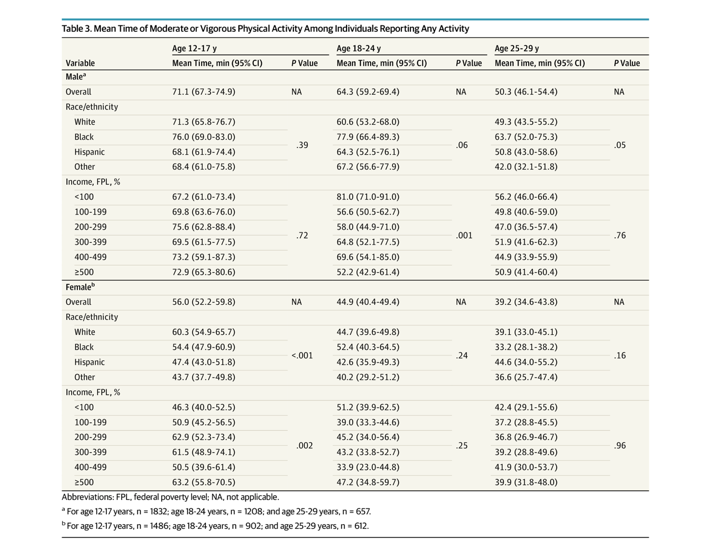Adolescent girls and young women are less likely to engage in heart rate-increasing physical activity than their male peers and do so for shorter periods of time.
We know young people should get at least one hour of physical activity per day. 150 minutes a week adults.
A study in the United States found that more than 20% of adolescent girls and 12% of boys do no sports or recreational physical activity at all in a week, with just under 30% of men and nearly 40% of women, ages 18-29.
Writing in the journal Jama Pediatrics, Wong and colleagues describe how they assembled and analyzed data from an annual nationwide health survey in the United States, covering the years 2007 to 2016, focusing on responses from 9,472 individuals ages 12 to 29.
While nearly 88% of 12- to 17-year-olds report exercising during the week, the figure drops to just under 73% for 18- to 24-year-old males, and just under 71% for 25- to 29-year-olds. For females, the percentage drops from just over 78% for teens to just over 61% for both older age groups.
For exercisers, the amount of time spent exercising decreases with age, from just over 71 minutes per day for adolescent boys to just over 50 minutes for those aged 25 to 29. For girls, it drops from 56 minutes to just over 39 minutes per day, respectively.
Black boys aged 18-24 have more physical activity time per day (78 minutes per day).
Once factors including weight, education, and income were taken into account, the team found that ethnicity was related to whether females reported any physical activity: overall, a higher percentage of white females said they exercised than black or Hispanic participants. The trend was less clear for males.






0 Responses to “Relazione among physical activity, gender, ethnicity and income”